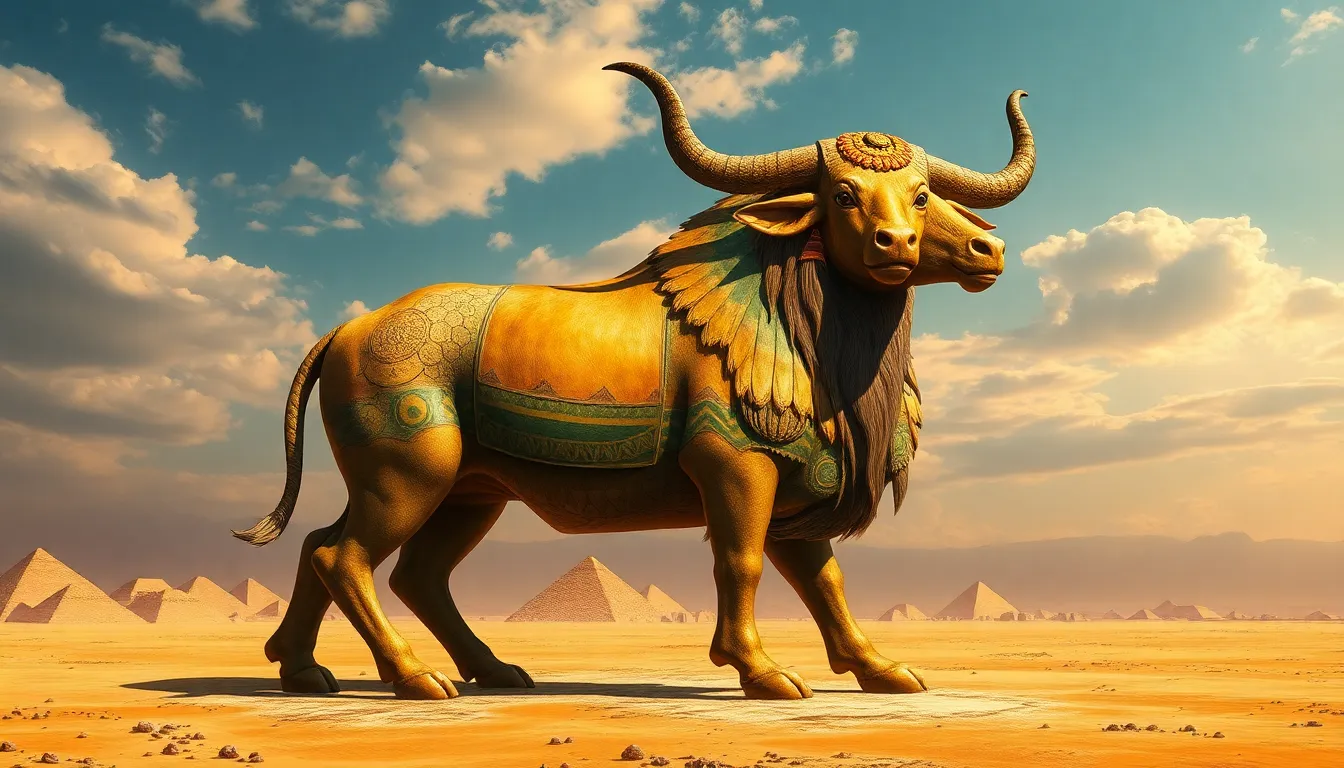The Geography of the Sacred Bull: Myths of Apis
I. Introduction to Apis: The Sacred Bull of Ancient Egypt
Apis, known as the sacred bull of ancient Egypt, holds a prominent place in Egyptian mythology and religious practices. Revered as a manifestation of the god Ptah, Apis symbolized strength, fertility, and the cycle of life and death. The bull was considered a living deity, serving as a bridge between the divine and the human realm, and played a vital role in the spiritual life of ancient Egyptians.
Worship of Apis was not merely an agricultural practice but also a deep-rooted religious belief that emphasized the connection between the natural world and the divine. The sacred bull was central to various rituals and ceremonies, embodying the fertility of the land and the prosperity of the people.
II. Historical Context of Apis Worship
The origins of Apis worship can be traced back to the early dynastic period of ancient Egypt, around 3000 BCE. The bull was initially associated with the god Osiris, but over time, it became linked to Ptah, the creator god of Memphis. The significance of Apis grew during the Old Kingdom, where it was formally integrated into the religious system.
Key historical periods that influenced Apis veneration include:
- Old Kingdom (c. 2686–2181 BCE): The height of Apis worship, with elaborate rituals and the establishment of the Apis cult.
- Middle Kingdom (c. 2055–1650 BCE): Continued reverence for Apis, with increased integration into funerary practices.
- New Kingdom (c. 1550–1070 BCE): Apis worship remained significant, with the bull often depicted in royal art and temple inscriptions.
III. Geographic Regions of Apis Worship
Memphis, the ancient capital of Egypt, served as the primary cult center for Apis worship. The city housed the Serapeum, a vast burial complex where the sacred bulls were interred. Here, priests performed rituals and ceremonies to honor Apis, emphasizing its importance in Egyptian society.
Other notable locations associated with Apis worship include:
- Heliopolis: A vital religious center where the sun god Ra was worshipped, often linked to the mythology surrounding Apis.
- Thebes: Though primarily associated with the god Amun, Apis was also venerated here during various dynasties.
- Saqqara: The site of the Serapeum, where many Apis bulls were buried, serving as a pilgrimage destination for worshippers.
IV. The Symbolism of Apis in Egyptian Culture
Apis was rich in symbolism, representing various aspects of life and nature. Key symbols associated with Apis include:
- Fertility: As a bull, Apis embodied the fertility of both the land and its people, essential for agricultural success.
- Strength: The powerful image of the bull symbolized resilience and strength, qualities revered by the Egyptians.
- Rebirth: Apis was often associated with the cycle of death and rebirth, mirroring the annual flooding of the Nile.
The flooding of the Nile was particularly significant, as it brought fertility to the land. Apis was believed to play a role in this natural cycle, linking agricultural prosperity to divine favor.
V. Myths and Legends Surrounding Apis
Apis is woven into various myths and legends that highlight its significance in ancient Egyptian belief systems. Notable stories include:
- Creation Myths: Some myths describe Apis as a primordial being involved in the creation of the world, emerging from the waters of chaos.
- Interactions with Gods: Apis is often depicted in stories alongside gods like Osiris and Ptah, emphasizing its role as a divine intermediary.
- Pharaohs and Apis: Many pharaohs claimed direct descent from Apis, reinforcing their divine right to rule and their connection to the gods.
VI. Rituals and Practices in Apis Worship
The worship of Apis involved elaborate rituals and sacred practices. Priests played a crucial role in these ceremonies, which included:
- Daily Offerings: Priests would present offerings of food, incense, and other gifts to the Apis bull in the temple.
- Festivals: Major festivals celebrated the life and death of Apis, culminating in the burial of the deceased bull in the Serapeum.
- Divination: The behavior of the bull was interpreted as omens, guiding decisions made by the pharaoh and the state.
The death of an Apis bull was a significant event, marked by mourning and elaborate burial rites, reflecting its revered status as a divine being.
VII. The Decline of Apis Worship
Despite its prominence, the worship of Apis began to decline toward the end of the ancient Egyptian civilization. Factors contributing to this decline included:
- Foreign Invasions: The conquests by foreign powers, such as the Assyrians and Persians, disrupted traditional religious practices.
- Rise of New Religions: The spread of Christianity and other religions diminished the importance of ancient Egyptian beliefs.
- Political Changes: Shifts in power and the centralization of worship around new deities led to the decline of Apis veneration.
VIII. Legacy and Influence of Apis in Contemporary Culture
Although the worship of Apis has waned, its legacy continues to resonate in modern culture. The continued reverence for Apis can be seen in:
- Modern Spiritual Practices: Some contemporary spiritual movements draw inspiration from ancient Egyptian beliefs, including the veneration of Apis.
- Art and Literature: Apis has influenced various artistic expressions, from ancient sculptures to modern literature, symbolizing strength and fertility.
- Popular Culture: The image of Apis and its associations have found their way into films, books, and other media, reflecting its timeless appeal.
In conclusion, Apis remains a powerful symbol of ancient Egyptian culture, embodying themes of fertility, strength, and the divine connection between the earth and the heavens. Its rich history and enduring legacy continue to fascinate scholars and enthusiasts of mythology alike.




